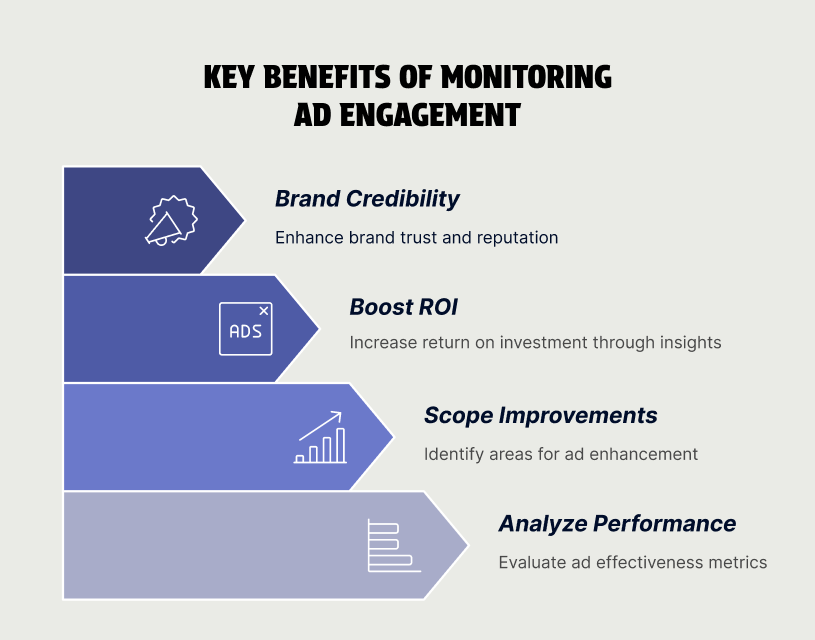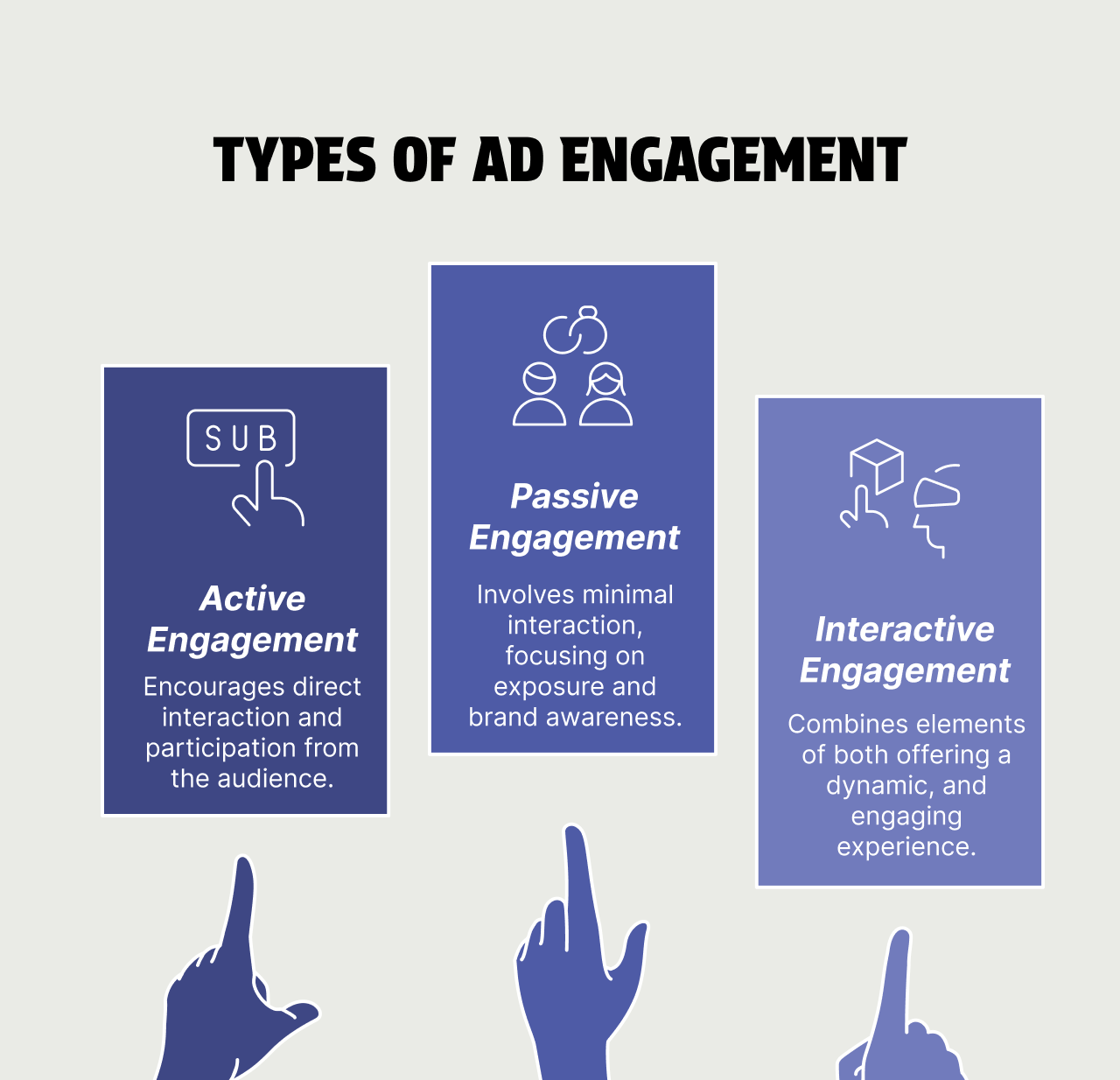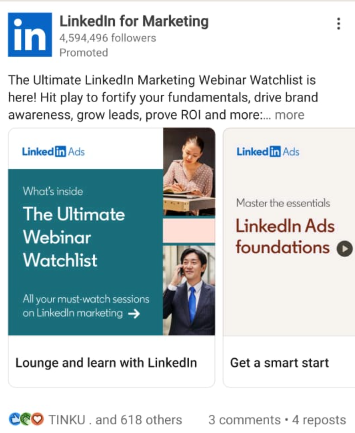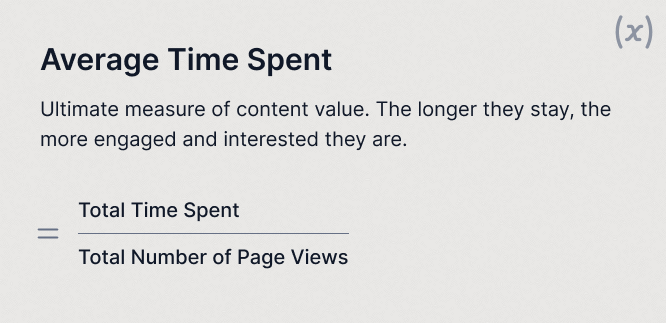We see 100s of ads on multiple platforms daily, making it difficult for advertisers to stand out. So understanding how to increase ad engagement become so important, as it directly impacts how well your campaign performs.
As Seth Godin said -

In this blog, we will see the exact ways to boost ad engagement along with 7 key metrices that will tell you whether people are engaging with your ads or not.
What does Ad Engagement mean?
Ad engagement can be defined as the level of interaction between your audience and your advertisement. In simpler terms, any form of interaction made by user with the ad such as - clicks, views, shares, or even purchases, can be termed as Ad engagement.
It includes:
- How often users visit your website or social media sites.
- How long they stay.
- Whether they interact with your posts.
- Whether or not they purchase your goods or services.
Engagement Actions can be in the form of a like, comment, share, link click, pageview, and more.
Why Ad Engagement Matters?
These are 4 big reasons why ad engagement is a key metric to ad success. -
It helps you
- Get More Visibility and High ROI
- Learn more about your audience
- Improve Future Ad Campaigns
- Build Strong Brand Trust & Loyalty

Reason #1: Get More Visibility and High ROI
Brands that run engaging ads get maximum visibility among their competitors. People often have brand recall when they see ads on their social feeds. An engaging ad correlates with better ROI in terms of reach, clicks, and conversions.
Also Check: 8 Ways to Reduce Wasted Ad Spend and Increase ROI
Reason #2: Learn More About Your Audience
Advanced ad analytics are available on all ad platforms, including Facebook, YouTube, LinkedIn, and X. They're an excellent tool for gaining an extensive grasp of your audience. Various metrics can be used to evaluate the effectiveness of the engagement ad.
Reason #3: Improve Future Ad Campaigns
Brands can improve their future performance by optimizing their ad inventory based on the ad insights. They are equipped to identify the areas that require improvement and make the necessary adjustments.
Reason #4: Build Strong Brand Trust & Loyalty
Engaging ads increase brand trust and foster enduring relationships with consumers. It is an interaction approach that supports their needs and builds loyalty.
What are the Different Types of Ad Engagement?
Engagement is a wide spectrum that represents a consumer’s ad experience. Active engagement involves the user’s psychological and behavioral understanding of the brand. Ad Engagement mainly fall into three categories:
- Active - Clicking, commenting, purchasing
- Passive - Scrolling, watching
- Interactive - Playing games, answering polls, engaging with shoppable ads

Type #1: Active Engagement
Active Engagement is when a user makes a conscious effort to interact with the ad. The user shows his willingness to perform an activity; it can be a click, comment, share, or place an order. Active engagement around the ad post influences other customers' interactions as well.
For instance, a user clicks an ad of a retail brand on Facebook, checks the product, and places an order; this counts as an active engagement.
Type #2: Passive Engagement
Passive Engagement is when a user doesn’t put deliberate effort to engage, instead, he/she interacts passively just by scrolling, watching videos, or reading comments. Most of the users fall into this type of engagement as they are just casually experiencing multiple ads in their free time.
For instance, when a user comes across a tech-sponsored blog, he opens it, scrolls it down, and returns, which can be an example of passive engagement.
Type #3: Interactive Engagement
Interactive Engagement is when a user performs an activity within the ad itself, it can be a quiz, a fun game, or an interactive display ad. This type of engagement leaves a long-lasting impression on their mind, as it requires a response or action from them.
In times of overwhelming online advertising, customers have a lower tolerance toward over-the-top promotional and gimmicky ads. Advertisers are incorporating interactive ads for marketing to grab attention and immerse users into the brand story.
At Kappax_, we build effective interactive ads that encourage user participation and, thus, better engagement with the brand. Transform your passive users into active users through highly engaging creative ads.
6 Simple Ways to Increase Ad Engagement in 2025
1. Make the Ad Experience User-Friendly
The user experience must be given top priority while promoting any product/service. Instead of just forcing product information on people, the goal is to make the advertisement feel organic, valuable, and engaging.
Consider personalizing their ad viewing experience, as 52% of customers say they are more satisfied with the personalized digital experience.
Tips for making a personalized ad experience
- Recognize the common pain points of the user and optimize the ad accordingly.
- Create personalized ads based on demographics, context, and behavior.
- Combine predictive analytics streamlined with AI ads to provide users with what they want.

2. Target the Right People with the Right Ads
A campaign can have multiple ads where each ad caters to a different set of audiences. Audience segmentation based on demographics, interests, purchasing, and browsing history is essential.
Additionally, choose the platform where your target audience is most likely to be active. With the same goal, different ads can run on different ad platforms.
Best practices:
- Create buyer personas for different user segments.
- Gain audience insights from analytics tools to guide your ad-targeting process.
- Choose the right channel to market your product.
- LinkedIn for professionals
- X (Twitter) for news & blogs
- Facebook for retail and e-commerce
3. Use Eye-Catching and Interactive Creatives
Making a creative ad is one part, but adding some interactivity to it is something every brand aspires to achieve these days.
The image, banner, or video elements must be extremely attractive and eye-catching, but applying interactivity drives lots of engagement to the ad. The use of polls, quizzes, and fun games entices users to participate and spread the word to others.
- Choose rich media ads that align with the brand identity
- Try to tell a story
- Use polls, quizzes, shoppable ads, to engage customers subtly.
Also Check: 8 Brilliant Interactive Ad Examples (with Live Preview)
4. Write Short, Powerful, and Clear Copy
The ad content needs to be written in a way that sparks conversation. Make it short, crisp, yet meaningful so that a few words can deliver the message behind the ad.
Experiment with storytelling to list down benefits instead of selling the product directly. Use emotional appeal (FOMO, curiosity, excitement) for a higher engagement rate.
- The CTA buttons ( Call Us, Click Here, Buy Now) must be made visible in the content.
- Use most relevant hashtags on the posts.
- Try to offer some value in the post rather than just promoting the stuff.
5. Make Sure Your Ads Work Great on Mobile
Mobile devices are now the most common way to access social media. So Ads need to be optimized for all devices so that it doesn’t affect the engagement rate. Create visuals in the recommended sizes and layouts of the chosen platform.
- Create designs for the safe zones, formats, and ad sizes of all platforms.
- Ensure all the ad’s elements, be it the logo, or CTA come nicely without cropping.
- Verify the landing page's mobile responsiveness and ensure that it is well-optimized for navigation.

6. Promote Across Different Platforms (Cross-Channel Ads)
The user’s journey of buying a product/service is not always linear. They check various sites, compare products, read reviews, and then make a final decision.
Cross-channel integration comes under reminder advertising, which allows customers to engage across various channels. Marketers can gain insightful details about customer journeys and their behavior through data collected from these platforms.
- Collect data from all the integrated platforms and make informed decisions.
- Analyze the customer’s engagement insights and allocate the budget accordingly.
- A/B test ads on all platforms and prioritize one that provides better ROI.

7 Metrics That Tell You If People Are Engaging with Your Ads
Understanding key metrics of engagement ads can pave the way for a successful campaign. The user ad experience can be enhanced by tracking and optimizing these parameters.
Different platforms have their set of metrics; we will learn about the common metrics with examples:

Metric #1: Clicks & Interactions
Clicks are simply when you tap the mouse button to perform any action. The number of clicks on any part of the ad can be counted as interactions. It can be CTA buttons, image clicks, or video play.
Metric #2: Impressions vs Reach
Reach is the total number of unique users who view your advertisement, whereas impressions are the number of times your ad was displayed even if it was not clicked once on the timeline.
These stats provide information about how many people saw the advertisement. It aids in determining the size of the audience but does not guarantee engagement.
Also Check: 10 Proven Tips to Turn Impressions into Clicks
Metric #3: Click-Through Rate (CTR)
CTR indicates how many people clicked on the ad versus how many people saw your ad. This metric suggests how users perceive the ad upon seeing it. A higher CTR shows people find the ad relevant and are willing to engage with it.

Metric #4: Average Time on Page
This is a time-based metric that indicates if users are finding the content of the website relevant and engaging or not. The more time they spend, the more engagement they generate.

Metric #5: Video Views & Watch Time
It indicates the number of times the video is watched by the users. This is an important metric for tracking engagement on YouTube. A view is counted when a video ad is watched fully or for a minimum of 30 seconds.
Metric #6: Engagement Rate
It measures how actively your audience is interacting with the ad. The engagement rate evaluates how well your ad drives engagement overall by taking into account all types of interaction.

Metric #7: Conversion Rate
Conversions measure how often people interact with your advertisement and then complete the end goal of that campaign. This is a crucial indicator to measure the number of new sign-ups, product or service purchases, newsletter signups, or ebook downloads.

Final Thoughts
Ad engagement is an important metric to analyze ad performance and connect with your targeted users. Understanding your target audience, producing high-quality content, utilizing social proof, and consistently optimizing your ads are all crucial for increasing ad engagement.
